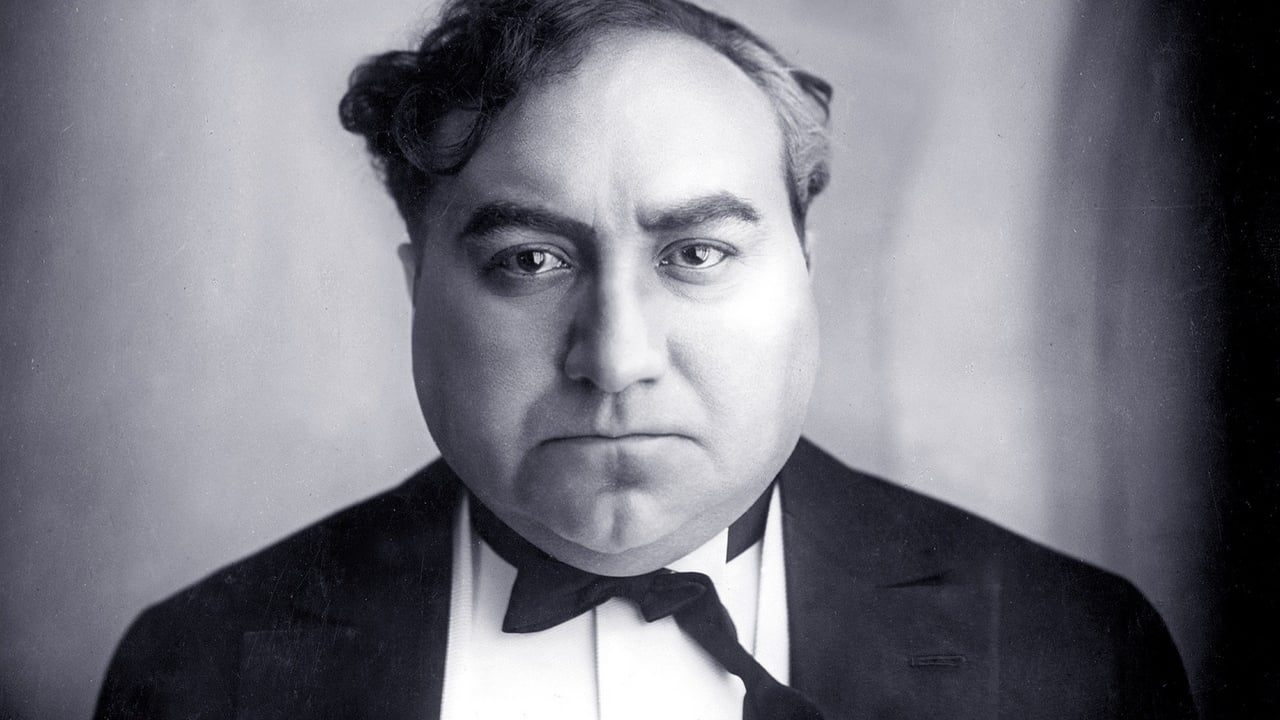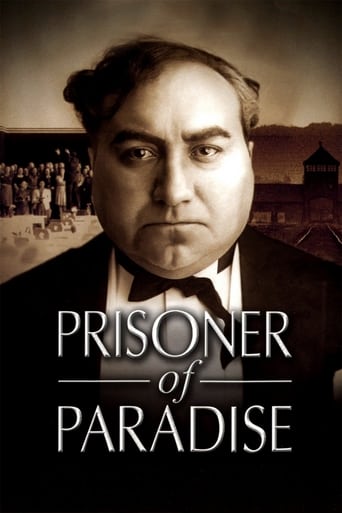

"Prisoner of Paradise" is like no other Holocaust documentary that I've ever seen. It is an amazing true story.SPOILERS AHEADThis movie is really a film about a film. The film is "Theresienstadt", the 1944 Nazi Propaganda film directed by German Jew Kurt Gerron. Gerron was a German comedic actor who lost everything due to Nazi persecution, and he eventually ended up in Theresienstadt concentration camp in what is now the Czech Republic. The Nazis asked him to make a movie showing how Theresienstadt was a utopia built by Hitler for the Jews. The central question of this movie is: Should Gerron have said "No" or "Yes" to the Nazis? Surely if he had said "No" it would have meant a ride to Auschwitz on the next transport. But by saying "Yes" he would be a tool of the Nazis, and making the film in no way would guarantee his survival. What should he do? Gerron makes "Theresienstadt" for the Nazis. As soon as Gerron finishes making the film for the Nazis, almost all of the cast is sent to Auschwitz and gassed on 11 consecutive transports. Gerron is put on the 11th transport, and murdered with gas on the day he arrives in Auschwitz.Gerron receives equal parts condemnation and praise for making "Theresienstadt". Condemnation for selling out to the murderers of his own people. Praise for trying to survive the Nazis by any means necessary. But I think that maybe Gerron knew they were all doomed, and he knew this might be the only record of his fellow Jewish inmates before their end. So he films laughing teenaged girls, young men playing soccer, inmates putting on a play, and everybody was having fun, smiling, in this "utopia" Hitler built for the Jews. Of course you never see the SS guards with machine guns.In the end, Gerron beat the Nazis at their own game. Gerron shows the HUMANITY of Hitler's Jewish captives, the humanity Hitler sought to deny. How young so many of them were. How much they really wanted to live! But everyone of them is forced to wear the yellow star, which is their death sentence. It makes the horror of the Holocaust clearer than any stacks of dead, emaciated corpses, because this film show What Might Have Been. Everyone of these teenaged girls could have become a doctor, homemaker, anything... and they were all murdered (or most of them) for the sake of a crazy ideology."Prisoner of Paradise" is a very haunting film. It ranks with Claude Lanzmann's 9 1/2 hour "Shoah" as a landmark Holocaust film. It made me realize that it's not just the injustice of genocide that's so terrible, it's the human potential that is lost. So many young people who could have done something with their lives, and they never got the chance. This film will make you think.
... View MoreAny documentary about a successful Berlin Cabaret performer, film actor and film director is the exciting and creative world of pre-WWII Germany -- who performed with Weill, Brecht, Marlene Dietrich, etc -- would be in itself unique and fascinating. This documentary certainly fulfills that expectation. In addition, it is the sad, tragic story of how a great artist was hounded and dehumanized by the Nazis. Finally, it is the incredible story of how the Nazis coerced Kurt Gerron to direct one of its most outrageous propaganda films to try to show the world that the Terezin Concentration Camp was a paradise for Jews sent to live in the "east." The reality was that Terezin was a squalid, overcrowded transit camp -- where many died from disease -- and tens of thousands were transported to Auschwitz (and other camps) to be murdered. In the end, Gerron was coerced to face the ethical dilemna that the Nazis posed to all their prisoners: "As long as you help us, we have a reason to keep you alive -- so ... How soon do you want to die?"Did Gerron make the film because he was selfishly trying to save himself and his family? If so ... so what? Wouldn't you have done that? On the other hand, it is even more tragic to think that Gerron probably knew that the Nazis would never let him live -- and that this was his last chance to work -- to be creative -- to be a "macher" -- to have a modicum of control over his life. Like all great artists, he did not want to produce anything less than his best. Certainly, many of the "actors" in the film were forced to pretend to be happy. On the other hand, when you see children eating bread and butter joyfully -- and you know that they would not have such food were it not for this film -- you can imagine that perhaps they were not pretending to enjoy the food. Similarly, the chorale group, the children's musical, and the symphony (performing "Study for Strings," written by Pavel Haas while he was incarcerated in Terezin) were not "pretending." They were enthusiastically displaying their love for their art and their pride of accomplishment. The Nazis should be vilified for their treatment of these artists. But the artists have nothing to be ashamed of.The film raises more questions than it answers. And some of the answers it suggests may not be convincing. But that is another reason why this film is deeply moving and valuable.This is an extremely well-made documentary -- excellently preserving much archival film footage. Ian Holm is an outstanding narrator. And the moments we see Gerron's acting and hear his singing are likely to encourage you to want to rent several of his films. Nominated for the 2003 Oscar -- amongst Spellbound, Winged Migration and Bowling for Columbine -- this film is further evidence that today's documentary film makers are among the best creative artists in the cinema.
... View MoreOn a recent weekend getaway to Toronto, I availed myself of the opportunity to see the only public screening in North America of one of the contenders for this year's best documentary Oscar . the joint American-Canadian production, PRISONER OF PARADISE. It's not the best documentary I've seen this year, but it's solid, deals with an interesting topic, and I strongly suspect that it's going to take home this year's prize. More on this later.Narrated by Ian Holm, the film opens with scenes of a utopian community lovingly described as being comprised completely of `like-minded individuals.' The grounds look well-kept, the people (especially the children) look happy and in good health, the arts flourish, and sporting activities are regularly enjoyed by all. But suddenly, Holm informs us that this seemingly-successful communal experiment is all . a huge lie.The `community' is actually the Nazi concentration camp of Theresienstadt, where prominent Jews who would be missed were congregated into a sprawling and photogenic (from the outside) old fortress whose barricades to external forces proved equally efficient at keeping prisoners contained. And the footage is from a particularly notorious piece of Nazi propaganda - `The Fuhrer Gives a City to the Jews' (1944), a film produced to dispel rampant rumors about the wholesale mistreatment and extermination of Jews by the Germans. The film then shifts the focus to the director of the film -- Jewish inmate Kurt Gerron, a onetime hugely successful character actor, cabaret performer and movie director in pre-Nazi Germany.If, by chance, you're a student of early cinema who's seen Josef Von Sternberg's classic, THE BLUE ANGEL, you've already seen a Gerron performance . he's the magician who uses the broken Emil Jannings as a stage prop late in the film. He also played the doctor in the Georg Pabst-directed Louise Brooks movie DIARY OF A LOST GIRL. On stage, he was the first performer to ever sing `Mack the Knife,' appearing in the original 1926 production of Bertolt Brecht's THE THREEPENNY OPERA. And besides being a success as a performer, he also directed some box office hits starring major German stars in the years immediately preceding the Nazi takeover. In terms of appearance, familiarity to audiences and show biz success, he was something of a German amalgam of Danny DeVito and Jackie Gleason.The first half of the film follows Gerron's odyssey to this final directing job -- from the beginning of his success as a performer . to his showbiz heyday . to his flight to France and then to Holland following the Nazi clampdown on Jews . to his capture following the German occupation of Holland . and finally, to his arrival at Theresienstadt. (A journey that included two missed opportunities to join friends like Marlene Dietrich and Peter Lorre, who'd successfully relocated to Hollywood.) The second half of the film deals with the situation at Theresienstadt, and features many interviews with survivors.In terms of documentary technique, the film is pretty much by the book, top-heavy with archival footage and talking heads. (There are also two re-creation scenes -- clearly labeled as such, thus averting a major documentary no-no that has cost Errol Morris dearly in the past.) But I never found my interest wandering at any time during the 97-minute running time. The survivors make it known that the prisoners resented Gerron's collaboration, but the filmmakers claim that Gerron consulted with Jewish elders before making it and received their permission to engage in an activity that would delay the word all detainees feared . `transport,' which meant delivery to a death camp.In terms of topicality, there's an interesting side story dealing with an evil regime successfully thwarting international inspection - what emboldened the Nazis to make the propaganda film in the first place was their unqualified success in convincing a visiting Red Cross inspector that everything was fine at the camp via a carefully orchestrated tour of the facilities. This aspect, coupled with four additional factors, should make it a very strong contender:1. Its `one of our own' main character (remember SHAKESPEARE IN LOVE beating out SAVING PRIVATE RYAN for best picture a few years back?)2. Its Holocaust-related theme (a traditional favorite in the documentary category - INTO THE ARMS OF STRANGERS, ANNE FRANK REMEMBERED, HOTEL TERMINUS, etc.)3. Its traditional documentary techniques . Hollywood frowns on creativity and visual panache in this category4. The desperation among Hollywood pragmatists to prevent Michael Moore from taking the podium in front of a world audience in these times You make think that it's impossible for a film with such little exposure to trump the record-setting success of BOWLING FOR COLUMBINE, but for an MPAA voter to be eligible to vote for best documentary, he or she HAS to see ALL of the films in nomination at a theatrical screening and certify the date and place in writing. And one of the nominees (WINGED MIGRATION) is withholding the film from screenings, so only a tiny handful of voters are going to be voting in this category this year.If any of the eligible documentaries is going to galvanize anti-Moore sentiment among the aged (and far less liberal as a whole than you might suspect) MPAA members who ARE eligible to vote, this is the one. If it wasn't for the fact that he'd actually have to admit to SEEING Michael Moore's movie in order to be eligible to vote, I'd bet the FARM that PRISONER would be Charlton Heston's choice.
... View MoreI loved this film for it's brave portrait of a character who made a morally ambiguous choice. The filmmakers allowed the story to unfold and give the audience credit for being able to come to their won conclusions about what they think of what Kurt Gerron did. It is the first time I have seen a film set against the holocaust that went beyond the horror stories we are already familiar with and examines a victim of nazi atrocities who in a strange way became a part of the propaganda machine. I think everyone should see this beautifully made film!
... View More